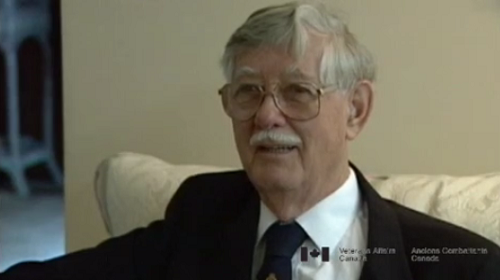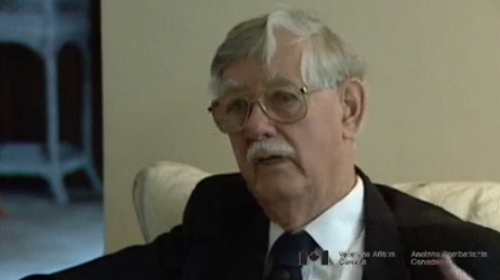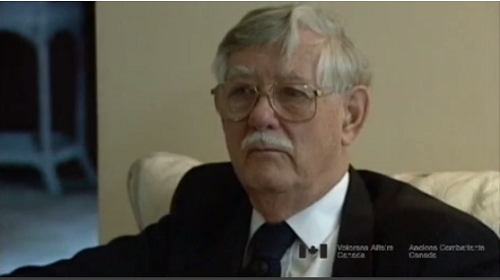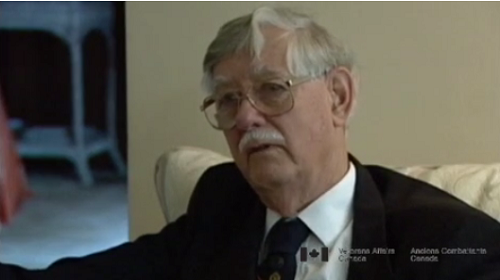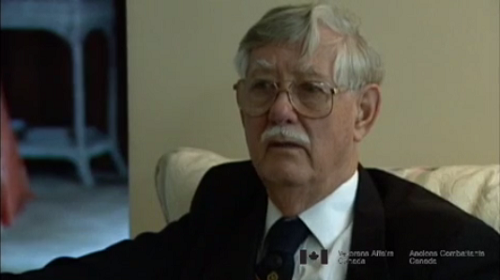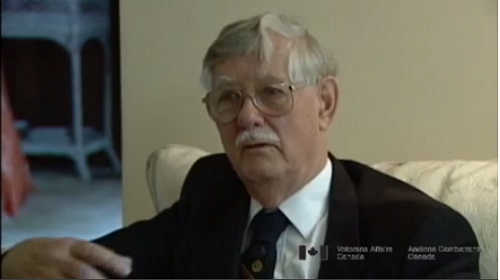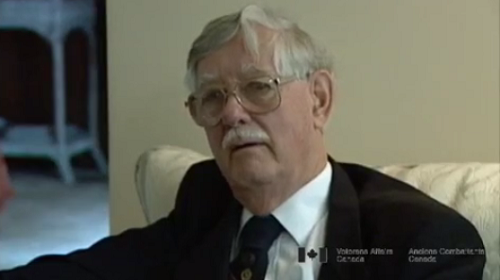Getting the Nerve to Fly
Heroes Remember
Getting the Nerve to Fly
Transcript
Description
Mr. Dungey relates his experiences of flight training with an Australian Instructor
George Dungey
George Dungey, the youngest of three children, was born in 1924 near Barrie, Ontario. His father, a First World War Veteran, was a laborer, machinist and semi-pro ballplayer. Before they enlisted, Mr. Dungey and his older brother operated a bakery. Following his brother, he enlisted in the Air Force when he was seventeen and a half, at Owen Sound. Mr. Dungey hoped to be bomber crew; following his Canadian training on Tiger Moths at Virden, Manitoba and Ansons at Souris, Manitoba, he received his pilot's wings. In England, he trained in Oxfords and Dakotas. It was as a Dakota pilot that Mr. Dungey was deployed to the Far East, where he joined the newly formed 435 Squadron at Impal, India. His squadron performed a number of valuable roles. It delivered supplies to British land forces in Burma, paradropped assault troops where needed, towed gliders to combat areas, and ferried the sick and wounded to safety. Mr. Dungey remained in the RCAF after the war, most notably serving in 412 Squadron, flying Canadian dignitaries to several different international destinations. After retiring from the RCAF, Mr. Dungey joined Transport Canada as a civil aviation inspector.
Meta Data
- Medium:
- Video
- Owner:
- Veterans Affairs Canada
- Duration:
- 1:17
- Person Interviewed:
- George Dungey
- War, Conflict or Mission:
- Second World War
- Branch:
- Air Force
- Units/Ship:
- 412 Spitfire Squadron
- Occupation:
- Pilot
Related Videos
- Date modified:



